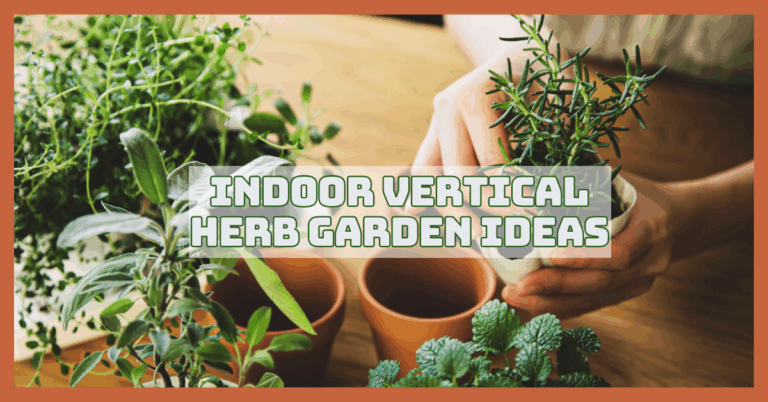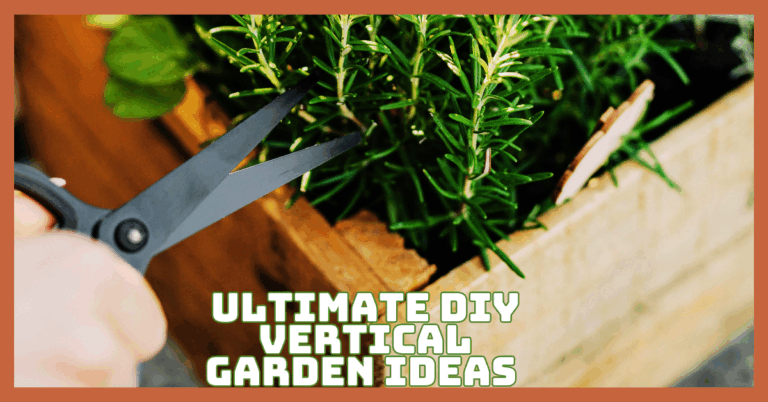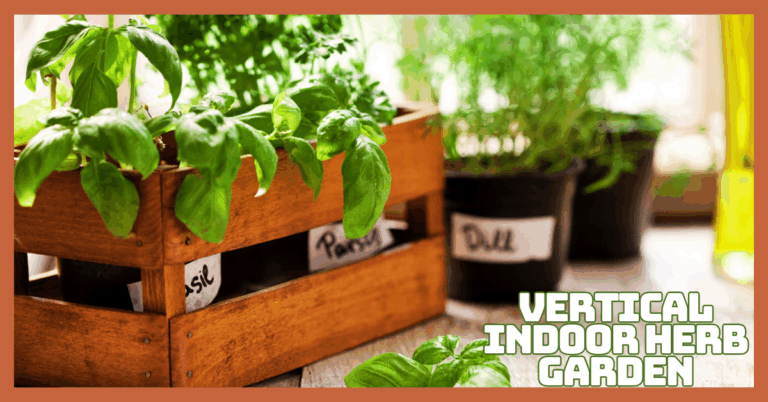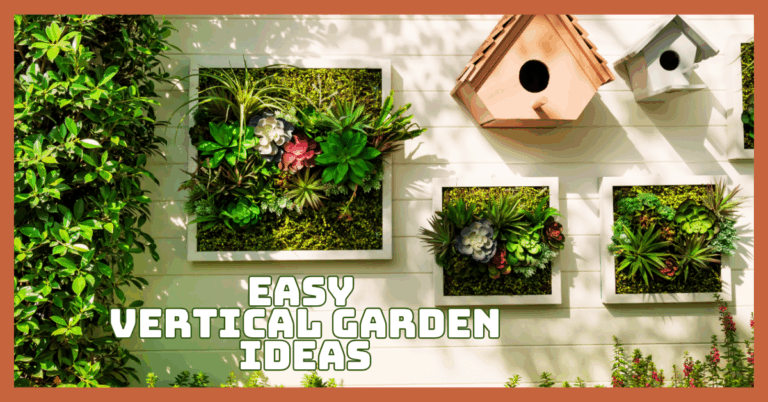Vertical Indoor Garden For Tropical Plants
Indoor gardening has become popular to bring nature inside, purify the air, and boost mental well-being. But what if you don’t have much floor space? Or want to create a stunning living wall that serves as natural decor?
A vertical indoor garden for tropical plants is the perfect solution to maximize limited space while adding lush, natural beauty and improved air quality to your home.
This blog will explore everything you need to know about vertical indoor gardens tailored to tropical plants. From benefits and setup to the best tropical species and care tips, you’ll have all the tools to create your lush vertical oasis.
Benefits Of Vertical Indoor Gardens For Tropical Plants
A vertical indoor garden for tropical plants brings vibrant greenery indoors, promoting wellness and efficiently using small spaces.
These living walls make the most of limited space, enhance your environment, and support physical and mental well-being.
Here are the top benefits of incorporating tropical plants into vertical gardens.
1. Space Efficiency
Vertical gardens are ideal for apartments, small homes, or offices with limited floor space. By utilizing vertical wall areas, you can enjoy a rich display of greenery without sacrificing living space. For city inhabitants wishing to incorporate nature into small or multipurpose spaces, this makes them ideal.
2. Improved Air Quality And Humidity
Through the release of oxygen and the removal of pollutants, tropical plants naturally purify the air. They also release moisture through transpiration, increasing humidity levels indoors.
This creates a fresher, more breathable atmosphere, especially in dry environments or during winter when heating systems dry out the air.
3. Aesthetic Appeal
A vertical garden brings life, texture, and colour to plain walls, acting as an eye-catching feature in any room. Tropical plants, with their bold foliage and vibrant shapes, transform indoor spaces into lush retreats. They are a natural design element that complements modern, bohemian, or tropical interior styles.
4. Mental Well-Being
Spending time around greenery reduces stress, enhances mood, and increases concentration. Tropical plants in a vertical garden create a sense of connectedness to nature, which can help people unwind and think more clearly. This soothing presence is especially valuable in home offices or areas dedicated to rest.
5. Noise Reduction
Thick, leafy plants can absorb sound, helping to reduce ambient noise in busy or noisy areas. A vertical garden is a natural sound barrier, making indoor environments quieter and more peaceful. This particularly benefits apartments, open offices, or homes near busy streets.
Best Tropical Plants For Vertical Indoor Gardens
Choosing the right species is key to a thriving vertical indoor garden for tropical plants, focusing on light, growth, and care needs. Here are some top choices:
1. Monstera Deliciosa (Swiss Cheese Plant)
Why?
Monstera Deliciosa is celebrated for its large, uniquely split leaves that instantly add a tropical, jungle-like feel to indoor spaces.
These dramatic leaves make a bold statement in vertical gardens, offering an exotic and textured visual that enhances green walls' overall depth and character.
How To Grow
Monstera Deliciosa should be started in a potting mix with high organic matter content that drains well, beginning with a young plant or healthy cutting.
Place it in a spot with bright, indirect light and maintain consistent warmth (18–30°C). Mist occasionally increases humidity and water when the top inch of soil seems dry.
Use a moss pole or trellis to support climbing growth. Use a balanced liquid fertilizer and fertilize once a month throughout the growing season.
The plant outgrows its container and needs to be repotted every 1-2 years. Yellowing leaves should be pruned to promote vigorous new growth.
Best For
Monstera Deliciosa is ideal for living walls and freestanding trellises, where its sprawling growth and large leaves can spread freely.
It performs beautifully in vertical installations, creating a lush backdrop and working well as a focal point in living rooms, offices, or spacious indoor corners.
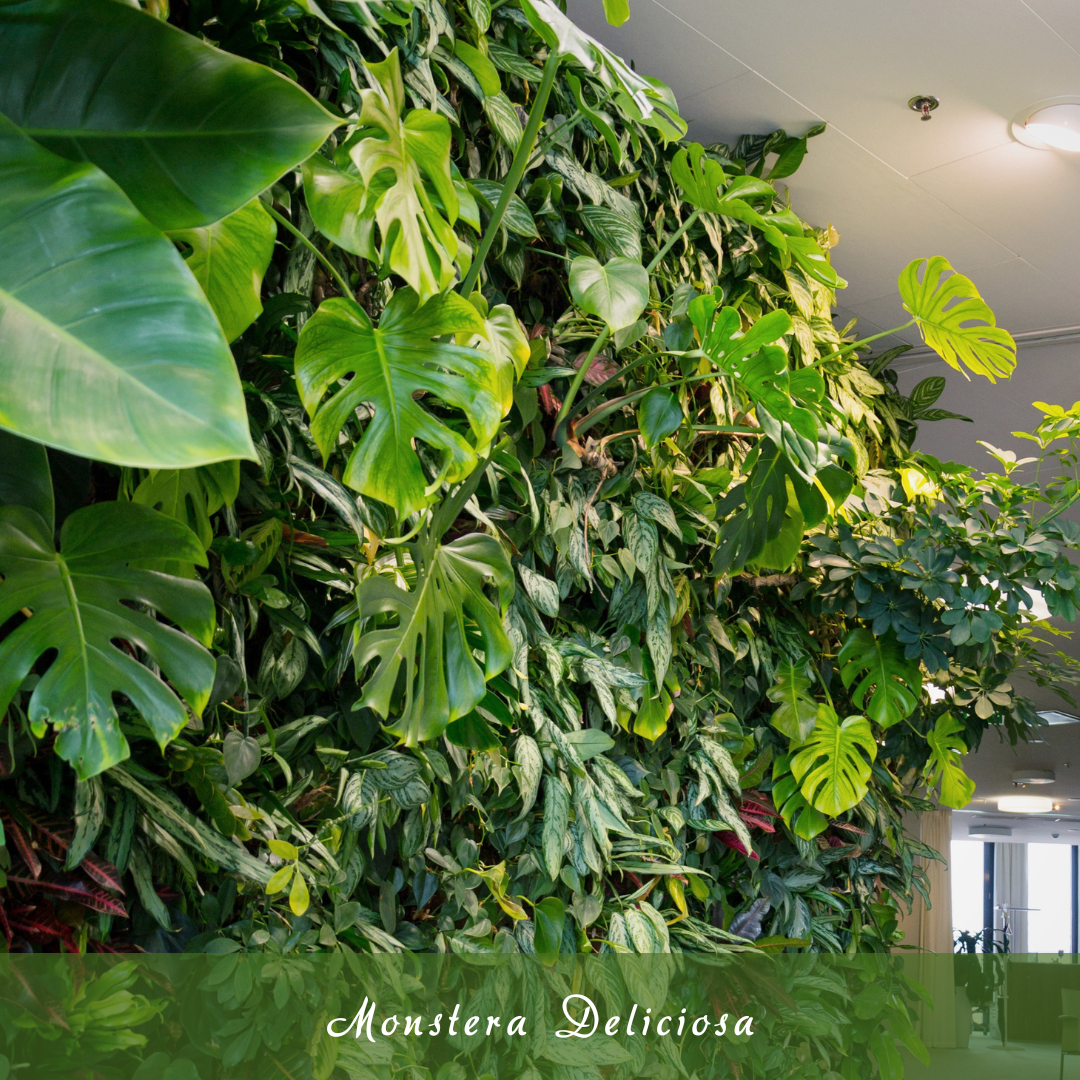
2. Philodendron (Heartleaf & Climbing Varieties)
Why?
Philodendrons are a perfect choice for a vertical indoor garden for tropical plants because their climbing nature and lush leaves create beautiful, textured greenery that thrives in vertical spaces.
These climbing varieties are naturally suited to upward growth, making them ideal for green walls where their graceful, trailing vines bring texture, greenery, and a relaxed, natural elegance.
How To Grow
To grow Philodendron (Heartleaf and climbing varieties), start with a young plant in a well-draining, peat-based potting mix. Place it in bright, indirect light and keep the environment warm and slightly humid.
Water when the top inch of soil dries out, and avoid overwatering. Provide a moss pole, trellis, or wall grid for the vines to climb or trail.
Fertilize monthly during spring and summer using a balanced liquid fertilizer. Prune leggy stems to promote bushier growth. These adaptable plants thrive indoors and are easy to train along vertical supports for a lush, natural display.
Best For
Philodendrons work beautifully on vertical trellises or modular green wall systems. Their climbing nature allows them to easily attach to support structures, creating a cascading or trailing effect. They’re perfect for adding vertical depth and soft greenery to living walls in homes, offices, or wellness spaces.
3. Epipremnum Aureum (Devil’s Ivy / Pothos)
Why?
Pothos is a fast-growing, durable vine that’s perfect for vertical gardens. Its heart-shaped leaves trail gracefully, creating a cascading effect ideal for wall displays. Its vigorous growth and minimal care needs make it a go-to plant for adding lush greenery to indoor vertical setups in no time.
How To Grow
To grow Epipremnum Aureum, plant cuttings or small starters in a well-draining indoor potting mix. Place the plant in bright, indirect light, though it also tolerates low light.
Water when the top inch of soil is dry, and avoid soggy conditions. For vertical gardens, guide vines with clips or let them trail naturally.
As the growth season progresses, apply a balanced liquid fertilizer once a month. Regular pruning will limit length and promote bushier growth. It roots easily in water, so propagation is simple—perfect for expanding your indoor green wall over time.
Best For
This plant is best suited for hanging planters or vertical pocket systems, where its trailing vines can drape beautifully. Whether mounted on a vertical grid or cascading from elevated planters, Pothos adds movement and depth to any indoor garden wall, even in low-light or compact spaces.
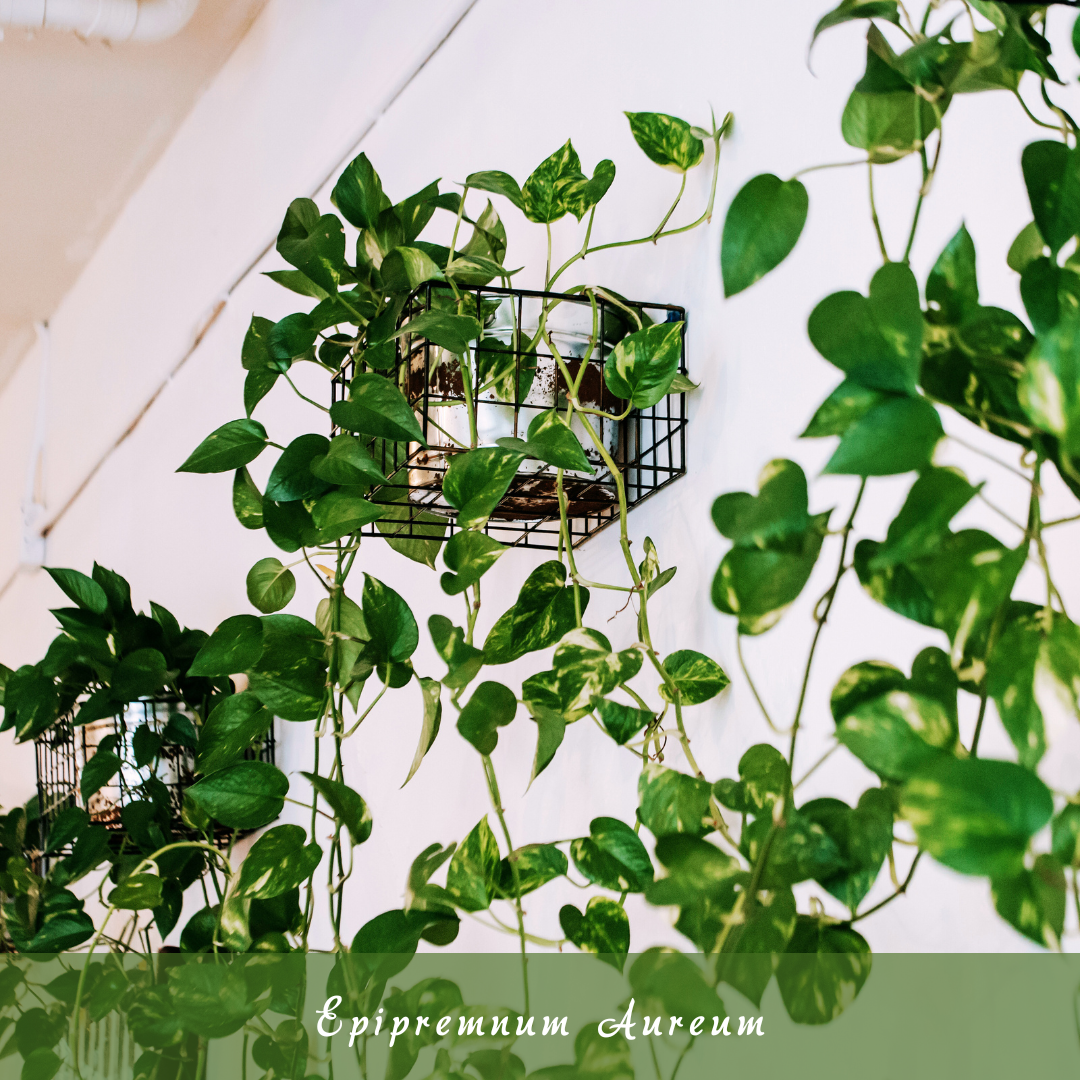
4. Calathea (Prayer Plant)
Why?
Calathea is known for its vividly patterned leaves, often marked with stripes, spots, or contrasting colours. Its foliage adds a vibrant, artistic touch to vertical gardens.
Unique to Calathea, the leaves open and close with the light cycle, bringing gentle movement and visual interest to indoor green walls.
How To Grow
To grow Calathea, plant it in a rich, well-draining potting mix with added peat or coco coir. Keep it in a warm space with high humidity and indirect, filtered light—avoid direct sun, which can scorch the leaves.
Water with distilled or filtered water when the top inch feels slightly dry, keeping the soil consistently moist but never soggy. For the best moisture retention, mist frequently or use a humidifier.
Avoid cold drafts and sudden temperature changes. Fertilize monthly during growing seasons with a diluted, balanced liquid fertilizer. Ideal for vertical gardens in stable, humid indoor environments.
Best For
Calathea is ideal for shelved vertical gardens or terrarium-style living walls that maintain high humidity and controlled lighting.
These setups protect its delicate leaves and allow close-up appreciation of its intricate patterns, turning your green wall into a living piece of botanical art.
Turn Your Passion for Nature Into Income
🌿 Whether you love gardening, caring for animals, or exploring holistic living,
You can share your knowledge online and earn from it.
Discover how nature lovers are growing their passions into meaningful, income-generating blogs. 👇
5. Ferns (Boston Fern, Bird’s Nest Fern)
Why?
Ferns like Boston and Bird’s Nest are ideal for a vertical indoor garden for tropical plants. Their feathery fronds add texture, boost humidity, and create a soothing, lush tropical atmosphere indoors. Their lush appearance creates a calming, woodland feel that enhances the tropical ambiance of indoor spaces.
How To Grow
To grow Boston Ferns and Bird’s Nest Ferns vertically, select a suitable hydroponic or moss-based vertical garden system that keeps roots consistently moist.
Position your garden in a spot with indirect, filtered light to mimic their natural shaded environment. Maintain high humidity by misting regularly or using a humidifier.
Use a well-draining, peat-based growing medium to support root health. Water consistently, but avoid waterlogging. Feed monthly with a balanced, water-soluble fertilizer. Proper airflow and temperature around 60-75°F help these ferns thrive, creating a lush, tropical indoor oasis.
Best For
Ferns are best suited for hydroponic or moss-based vertical garden systems where their roots can stay consistently moist.
Their adaptable growth makes them a favorite for living walls designed for high-humidity areas, bringing softness and volume to the overall design while supporting air quality and moisture levels.
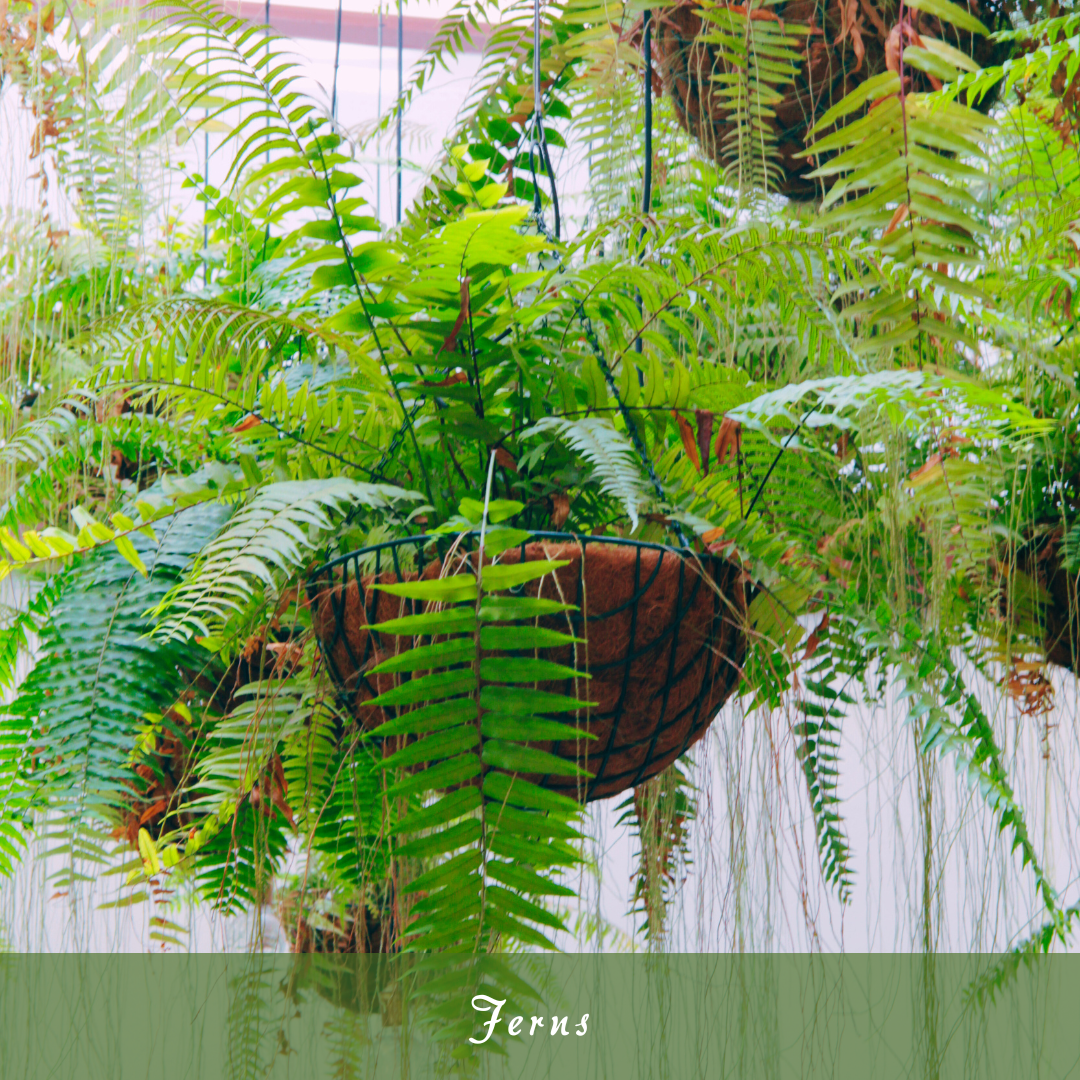
6. Alocasia (Elephant Ear)
Why?
Alocasia’s large, dramatic leaves with bold veins add a striking architectural presence to vertical indoor tropical gardens.
Its dense, exotic foliage gives the garden a tropical feel, which makes it an excellent choice for adding height, texture, and a striking statement that improves the overall visual impact of the space.
How To Grow
Place Alocasia indoors in bright, indirect light, avoiding direct sun that can scorch its leaves. Keep soil moist but well-drained to prevent root rot.
Maintain high humidity by misting regularly or using a humidifier. Use peat-based potting mix rich in organic matter for moisture retention.
During periods of active development, fertilize once a month using a water-soluble, balanced fertilizer. Keep temperatures warm between 65-80°F and protect from drafts or sudden temperature drops. Regularly check for pests like spider mites.
Best For
Alocasia is best suited for vertical gardens that require bold statement plants with dramatic foliage. It thrives in tropical indoor environments with consistent humidity and indirect light.
Perfect for adding height and texture, it complements other lush tropical species on living green walls or vertical plant installations.
7. Tillandsia (Air Plants)
Why?
Tillandsia are perfect for a vertical indoor garden for tropical plants because they grow without soil, adding unique textures and a modern, artistic touch to creative indoor vertical designs.
Their sculptural forms and varied textures add a contemporary, artistic flair to walls, ideal for creating minimalist or futuristic indoor plant displays.
How To Grow
To grow Tillandsia (air plants), skip the soil and mount them on materials like driftwood, cork bark, or wire frames. Place them in a location with bright, indirect light and good air circulation.
The plants can be misted twice to thrice a week or soaked for 20 to 30 minutes every seven to ten days in room temperature water.
To avoid rot after watering, brush off any extra water and allow them to completely dry before reinstalling. Fertilize monthly with a diluted bromeliad or air plant fertilizer. These low-maintenance plants thrive in creative vertical setups and modern indoor spaces.
Best For
Tillandsia excels in mounted displays such as driftwood, wire frames, or geometric holders. These creative setups allow air plants to be arranged strikingly, bringing vertical gardens a modern twist. They’re especially great for accent walls, offices, or minimalist interiors where soil-based systems may be impractical.
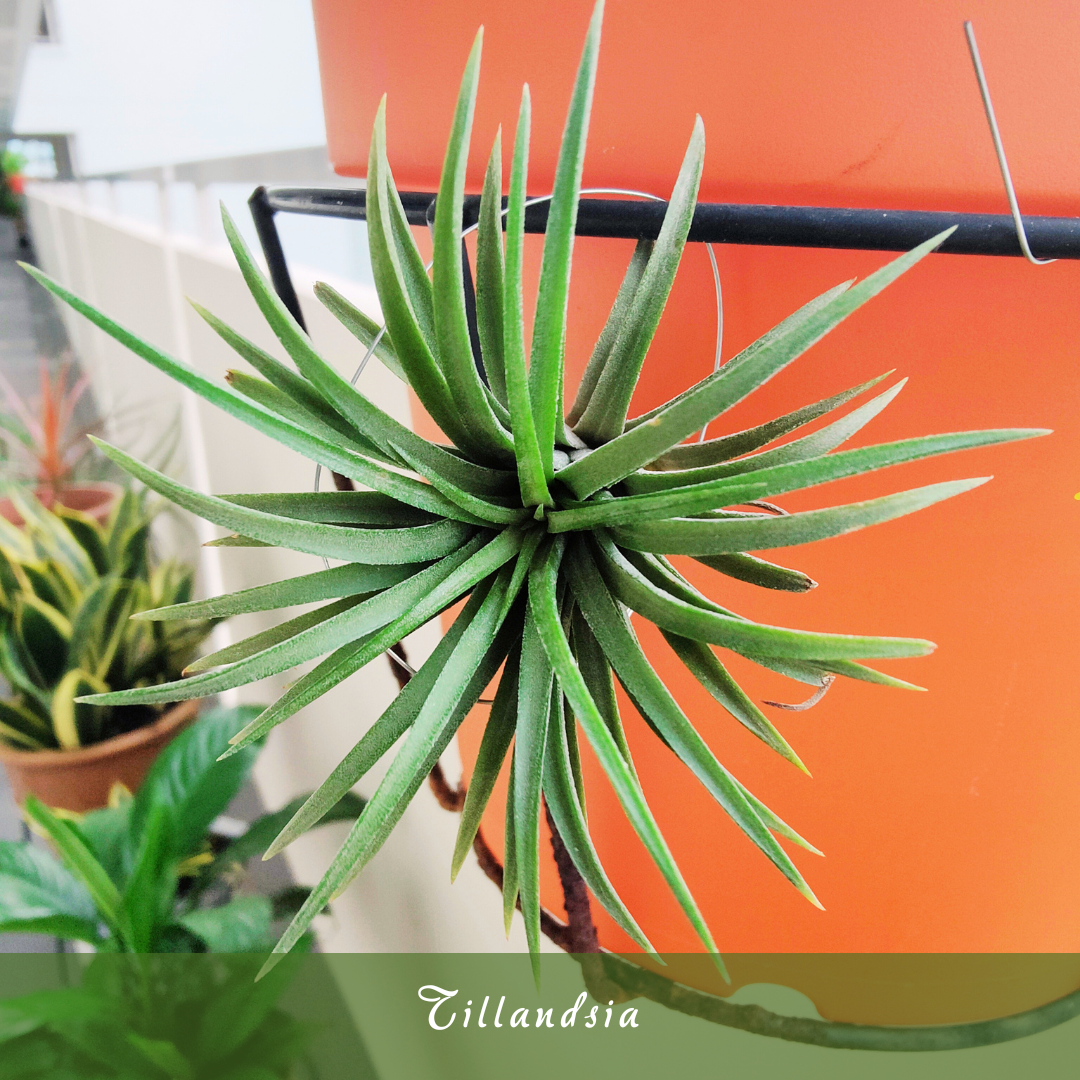
8. Peperomia (Baby Rubber Plant)
Why?
Peperomia offers a variety of leaf shapes and textures, from thick, waxy to delicate, making it ideal for filling smaller spaces in vertical indoor tropical gardens. Its compact size and colourful foliage add intricate detail and subtle texture without overcrowding the garden.
How To Grow
Peperomia grows well in low to bright indirect light indoors. To avoid root rot, water sparingly and let the soil dry out in between applications.
Use a well-draining, peat-based potting mix rich in organic matter. Maintain moderate humidity but avoid excess moisture.
Fertilize lightly every 6-8 weeks during active growth with a balanced fertilizer. Protect from cold drafts and extreme temperatures. Its adaptable nature makes it perfect for vertical tropical garden setups.
Best For
Peperomia is best for filling small gaps in vertical indoor tropical gardens, adding textural contrast with its diverse leaf forms.
Its compact size suits tight spaces and mixed plantings, making it ideal for layered, detailed green walls in low to moderate light conditions.
9. Dieffenbachia (Dumb Cane)
Why?
Dieffenbachia features large, variegated leaves with creamy white and green patterns, adding beautiful contrast and lushness to vertical indoor tropical gardens.
Its vibrant foliage brightens shady spots and contributes texture and depth, enhancing green walls' rich, tropical atmosphere.
How To Grow
Grow Dieffenbachia in bright, indirect light or moderate shade inside. Water sparingly, avoiding overwatering by letting the top inch of soil dry between applications.
Keep humidity high by misting regularly or using a humidifier. Use a peat-based, well-draining soil mix. Throughout the growing season, fertilize with a balanced fertilizer every four to six weeks. Maintain temperatures between 65-75°F and avoid cold drafts or rapid temperature changes to keep it healthy.
Best For
Dieffenbachia is ideal for filling vertical indoor tropical gardens with vibrant, variegated foliage. It thrives in areas with moderate light and high humidity, making it perfect for shaded spots on living walls where texture and colour contrast are needed to enrich the garden’s tropical feel.
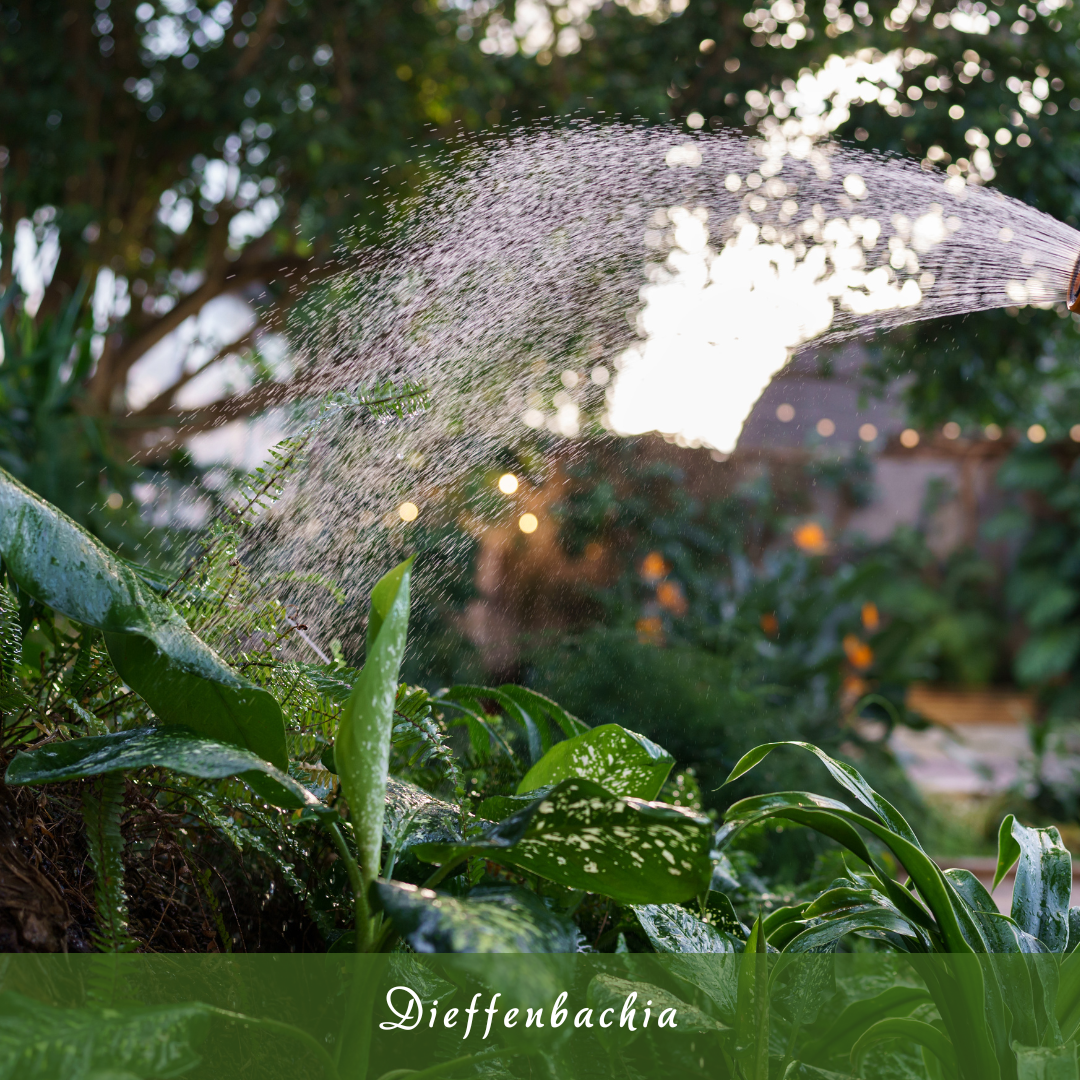
Creative Plant Styling Ideas
Transform your space with these creative plant styling ideas—from lush tropical jungles to serene spa vibes, minimalist elegance, and vibrant bohemian charm—each bringing unique greenery and ambiance to your home or office.
1. Tropical Jungle Wall
Create a rich tapestry of greenery using plants with large, lush leaves such as Monstera, Philodendron, and ferns. Ideal for spacious living rooms or entryways with natural light, this design can cost around $200-$400, depending on plant maturity and wall structure.
Use wooden trellises, metal grid panels, or a custom wall frame to arrange plants densely. Add ambient lighting to enhance the jungle vibe and consider a self-watering system for easy maintenance.
2. Modern Minimalist Garden
Embrace clean lines and simplicity using uniform planters in matte black, white, or grey. This design works well in sleek office spaces or Scandinavian-style homes with plenty of indirect light.
Use Calathea or ZZ plants and stick to two to three varieties for cohesion. Expect costs around $150-$300. Materials include modular vertical planters or wall-mounted ceramic pots, and LED grow lights if natural light is limited.
3. Bohemian Eclectic Style
This vibrant style is all about personality—mix colourful pots, woven baskets, and trailing tropicals like Pothos and Tradescantia.
Suitable for creative spaces, reading nooks, or bedrooms, the setup may cost $100-$250 using DIY frames and repurposed materials.
Incorporate macrame hangers, driftwood mounts, and assorted pottery. Layer textures and colours freely to achieve that laid-back boho charm, and add string lights or lanterns for an extra cozy feel.
4. Spa-Inspired Garden
Design a serene corner with calming tones and low-maintenance tropicals like Peace Lilies and Bamboo Palms. This style focuses on tranquillity, perfect for bathrooms or quiet home office corners.
Costs range from $120 to $250. Use natural stone, bamboo panels, or white ceramic planters. Enhance the spa feel with smooth pebbles, small water features, and warm ambient lighting. Choose fragrant or purifying plants to elevate the calming effect and create a retreat-like atmosphere.
Conclusion
Creating a vertical indoor garden for tropical plants brings a lush, vibrant atmosphere to any space while maximizing limited space.
Tropical plants thrive in humid, warm environments and add exotic beauty with rich foliage. You can cultivate a thriving vertical oasis indoors by carefully selecting suitable species and ensuring proper lighting and moisture.
This approach enhances décor, improves air quality and promotes relaxation, making it a perfect way to enjoy nature year-round inside your home.
I trust you enjoyed this article on the Vertical Indoor Garden for Tropical Plants. Please stay tuned for more inspiring guides, helpful tips, and ideas to help you live closer to nature every day.
Take care!
— JeannetteZ
💬 Your Opinion Is Important To Me
Do you have thoughts, ideas, or questions? I’d love to hear from you. Please leave your comments below or email me directly at Jeannette@Close-To-Nature.org.
📚 More Nature-Inspired Reads
Explore more ways to connect with nature, nurture your pets, and live in harmony with the world around you 🌿




